
Previsión: Fabulaciones para una sanación decolonial
2010 – 2023
It is an installation project that explores the decolonization of historical memory in Cuba through the rewriting of silenced narratives. Drawing inspiration from Saidiya Hartman’s notion of critical fabulation, the project re-edits and redesigns the pages of the original newspaper in an attempt to counteract the systematic erasure of the Partido Independiente de Color from official discourse. As Hartman (2019) argues, critical fabulation offers a method for reimagining lives that have been erased by colonial power. In this spirit, the project employs strategies of rewriting and visual intervention to revisit stories that Cuban historiography has rendered invisible, reclaiming the archive as a site of resistance.
This exercise in critical fabulation took shape within a diaspora that acknowledges the impossibility of openly challenging racism in Cuba —where editing and distributing a non-governmental newspaper or engaging in citizen journalism without risking censorship, imprisonment, or exile remains unfeasible. In this sense, the contemporary version of Previsión symbolically assumes a dissident role it played in 1910, bringing together voices and figures—mostly Afro-descendants—who have been rendered invisible, exiled, rejected, or denied by the triumphant-totalitarian narrative of Cuban socialism.
The project reclaims the newspaper as a vessel for critical memory and political imagination, interrogating historical absences and weaving past and present into a vision of a more just and inclusive future. The work integrates contributions from Afro-Cuban authors and activists—including Sandra A. Ramírez, Yesenia Selier, Arsenio R. Quintanas, Coco Fusco, Francisco Morán, and Anamely Ramos—whose reflections assert the enduring continuity of the antiracist struggle in Cuba. Their voices infuse the newspaper’s reinterpretation with a multiplicity of perspectives, expanding its historical resonance and reaffirming its relevance in the present.
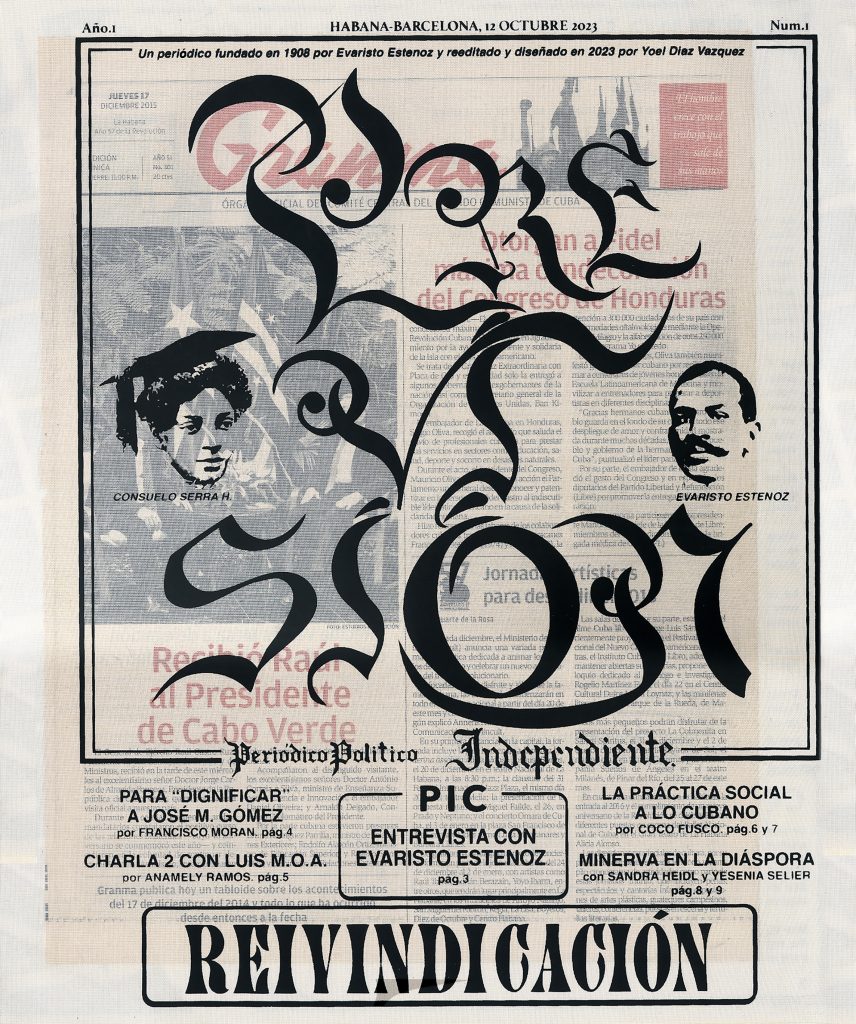
Exhibition "Anti Futurismo Cimarrón", 2023 / 2024
The installation I presented at the Anti-Futurismo Cimarrón exhibition at Arts Santa Mònica, Barcelona, weaves a constellation of actions around Previsión and traces the chronological development of the project, from its inception in 2010 to its current form. These actions encompass a range of artistic practices such as a documentary video, the reissue of the newspaper in screenprint and letterpress formats, an opening performance, and a graphic map that geographically situates the viewer in the Havana area where the monument to José Miguel Gómez still stands.
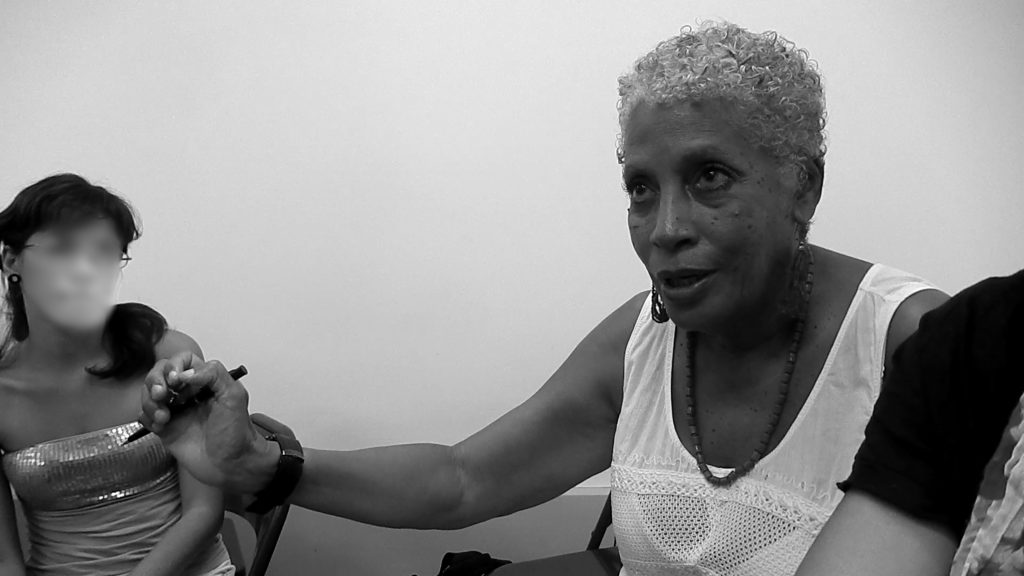
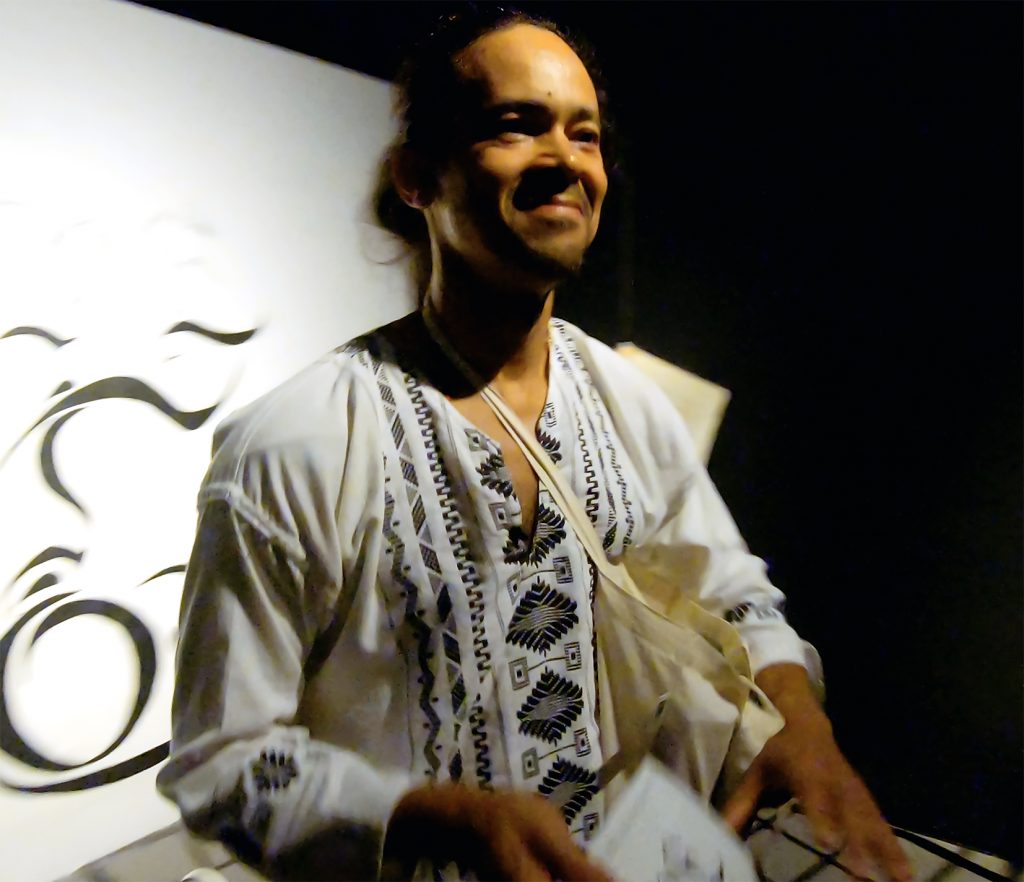
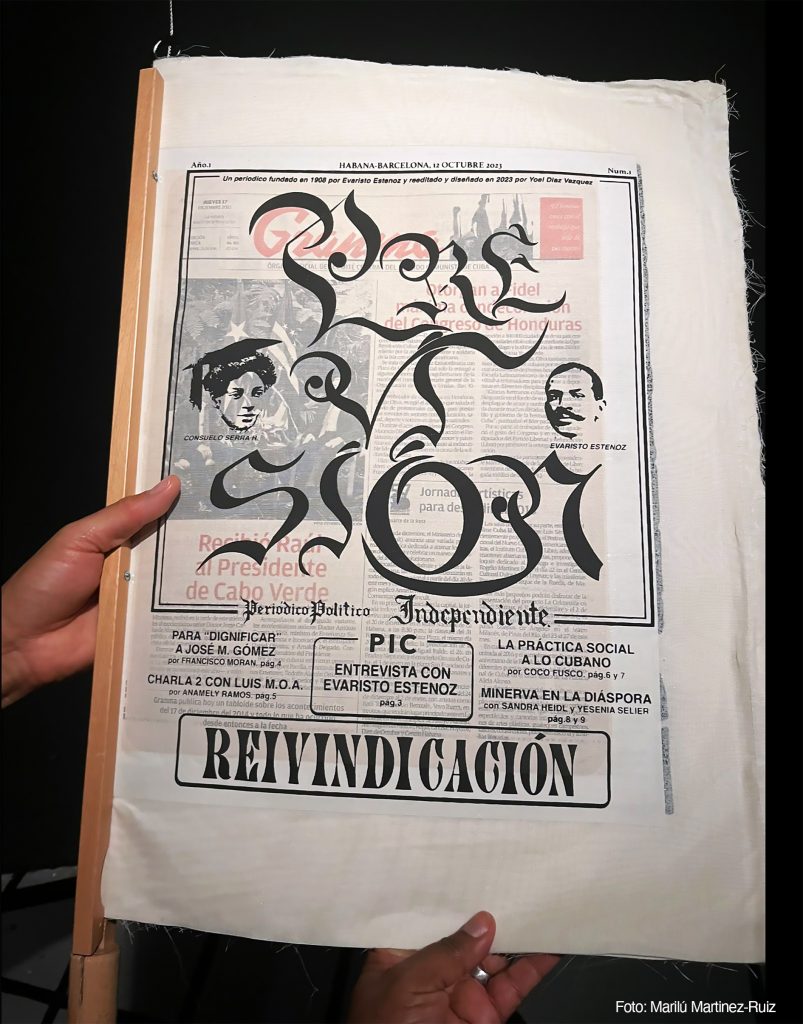
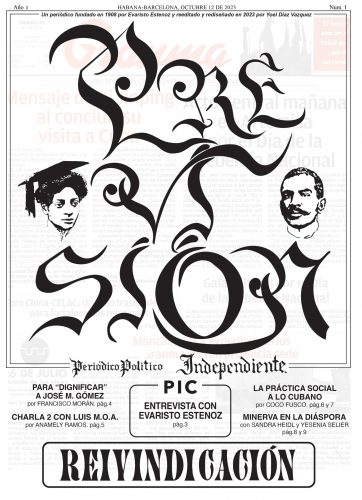
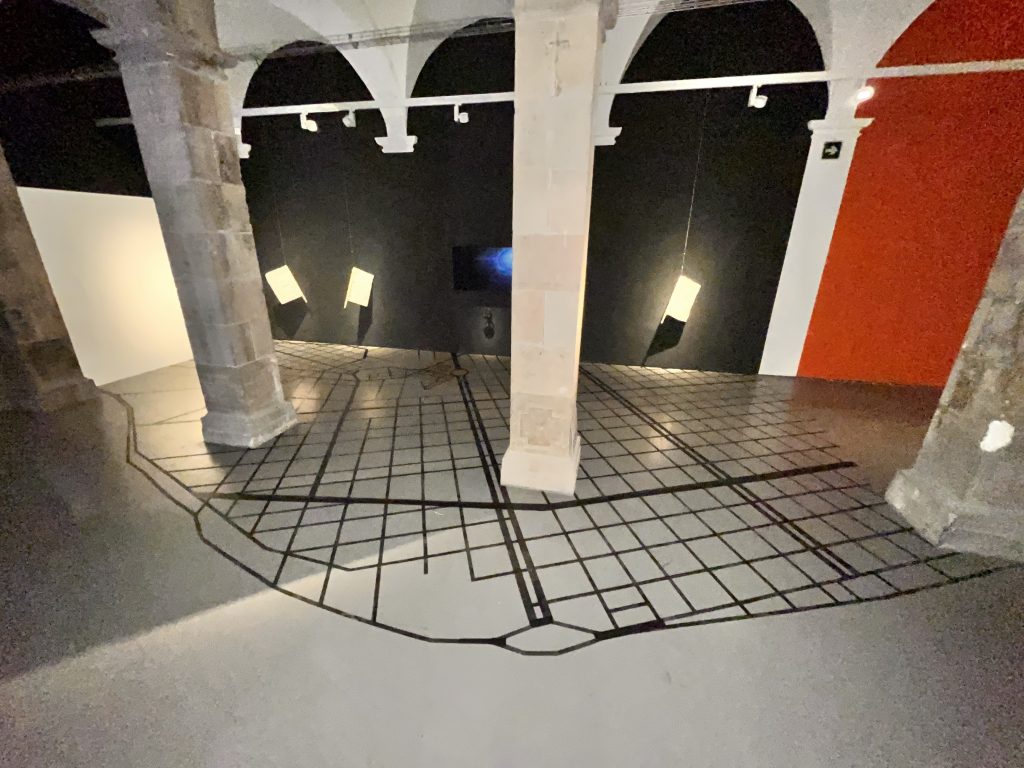
The project’s origin and evolution are revealed through the reassembly of a didactic video titled Previsión. This video brings together my 2010 work Túmbenlo, a brief interview and performance by rapper Alexey—also known as “El Tipo Este”—calling for the removal of the statue of José Miguel Gómez, and a video-documentation recorded by Lockward in 2016, capturing the reactions to Túmbenlo among students from the Faculty of Arts and Letters at the University of Havana. This screening took place during a lecture on decolonial aesthetics delivered at the university by Dominican writer and curator Alanna Lockward. The introduction and closing of the video are led by Cuban rapper Alexey, while Gisela Covarrubias opens the decolonial debate sparked by the project.
In the performance Reivindicación, I entered the exhibition space and stood before a wall covered by a canvas painted white. With my bare hands, I began peeling away the paint to reveal black letters that had been painted underneath, spelling the word Previsión.
I then handed out copies of the newspaper to the audience while chanting my street call: “Previsión, the program continues! Previsión, this struggle doesn’t end! Support it!” This performance marked the launch of the printed edition of Previsión, involving collaborators Sandra A. Ramírez and Arsenio R. Quintana—both present at the event—and sparking the audience’s curiosity to engage with its contents.
For the screen-printed graphic version, I handcrafted the pages, creating a layered composition rich in symbolic meaning. Between two sheets of fine transparent fabric, I inserted pages from Granma—Cuba’s official state newspaper—so that they remain faintly visible in the background. Over these, I printed the new Previsión pages using black gouache ink, inviting viewers to physically leaf through and explore these archival materials through a sensory experience.
I chose Granma as a base to provoke a dialogue within a medium that tolerates no political alternatives, thereby underscoring the exclusion and censorship of the authors and articles featured in this updated edition—many of whom have been banned, exiled, or silenced in Cuba.
The black gouache lends the piece a graphic intensity that bridges multiple temporalities, linking past and present. The new content appears to float atop the blurred materiality and symbolic weight of Granma, evoking the uncertainty of official narratives.
From the outset, I knew the front page of this new issue of Previsión had to be dedicated to the revolutionary platform of the Partido Independiente de Color (PIC). It was crucial to grant it the recognition that has long been denied—both historically and politically.
The work Previsión, at the solo exhibition "Critical Press: Visual Narratives of Resistance", 2025
1– El video Previsión nos remite a los antecedentes de este proyecto, con Alexei, El Tipo Este, del dúo Obsesión y su demanda de tumbar la estatua de Jose M.G. video «didáctico».
En el año 2014, la ya fallecida critico y curadora de arte dominicana Alanna Lockward, ofreció una presentación sobre Políticas decoloniales en la facultad de artes y letras en la Universidad de la Habana. Allí Lockward mostró mi video Túmbenlo, producido en la Habana en el 2010, donde su protagonista: Alexei aka El Tipo Este, rapea su tema Calle G, en cuyas letras demanda derribar la estatua de JMG, frente a la negativa del estado cubano.
La intervención de la periodista y escritora Gisela Arandia Covarrubias inicia este video, dejando claro la necesidad histórica de un proceso de descolonización en la Cuba actual. Sus importantes reflexiones desafían el discurso oficial interpretados en esta ocasión por estos jóvenes estudiantes, que dan muestra de la poca información y relación que han tenido con los estudios decoloniales. La grabación de esta polémica discusión se ve desafortunadamente interrumpida y algo dañada en su final.
Mi propuesta consiste en la re-edición de un nuevo video titulado Previsión, en el que dialogan estos dos materiales del pasado con el presente, en animaciones didácticas y entrevistas tanto a protagonistas de ese debate como a activistas y académicos afrocubanos.
La performance Reivindicación, que es la primer performance en toda mi carrera como artista, consistió en develar, raspando con mis manos la capa de pintura blanca previamente pintada sobre el texto Previsión, también pintado previamente en negro.
La performance puede verse como la acción de apertura y celebración a este simbólico lanzamiento de la versión en papel del periódico Previsión. Pues luego de develar el texto PREVISIÓN, tome un bolso que estaba lleno de estos periódicos y comencé a repartirlos personalmente al público. Periódicos de los cuales aún ni el público, ni siquiera el museo tenían idea de su existencia. Me invente un pregón que decía así:
PREVISIÓN
EL PROGRAMA CONTINUA
PREVISIÓN
ESTA LUCHA NO TERMINA
PREVISIÓN
APOYALO, LEELO.
Y canté este pregón mientras repartía el periódico. El historiador y escritor cubano Arsenio Rodriguez Quintana y la activista contra el racismo Sandra Heidi también me ayudaron a repartirlo, pues les entregué a ambos previamente un par de bolsas llenas de periódicos. Todo estaba pensado como una sorpresa, incluso para el mismo museo como dije antes.













